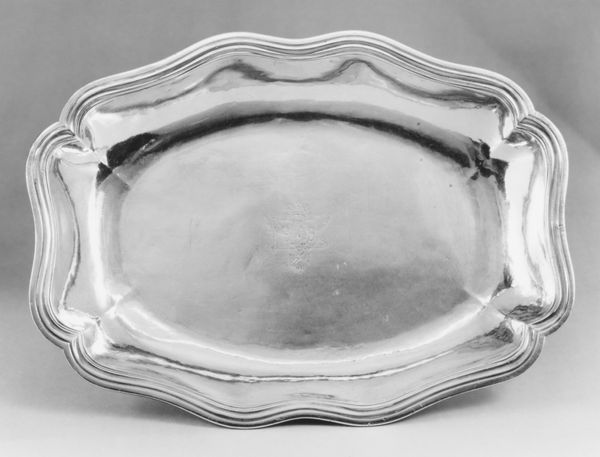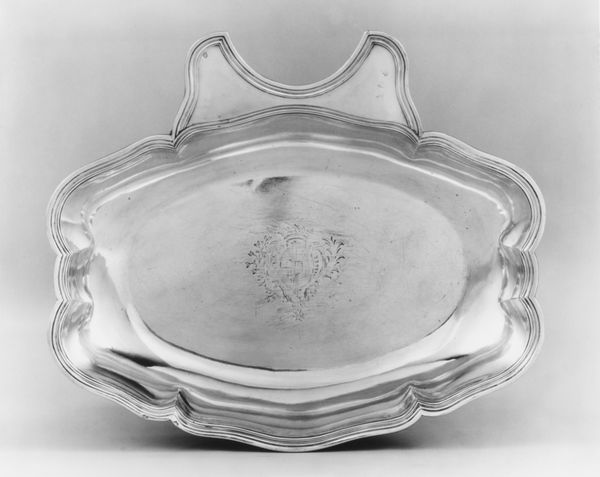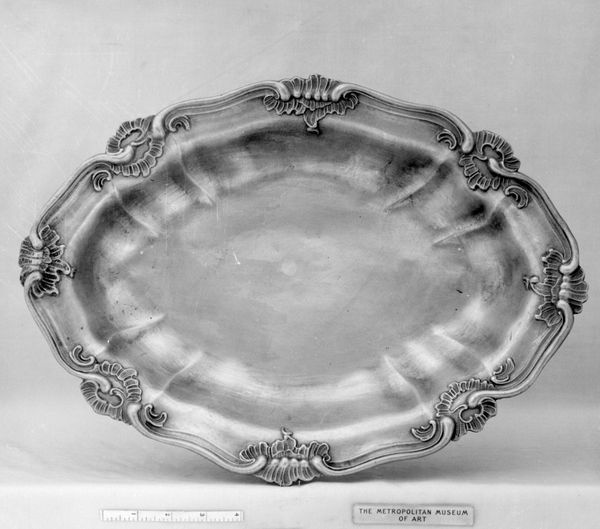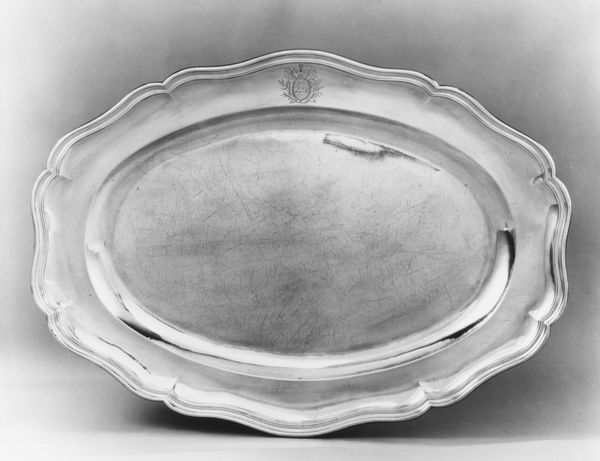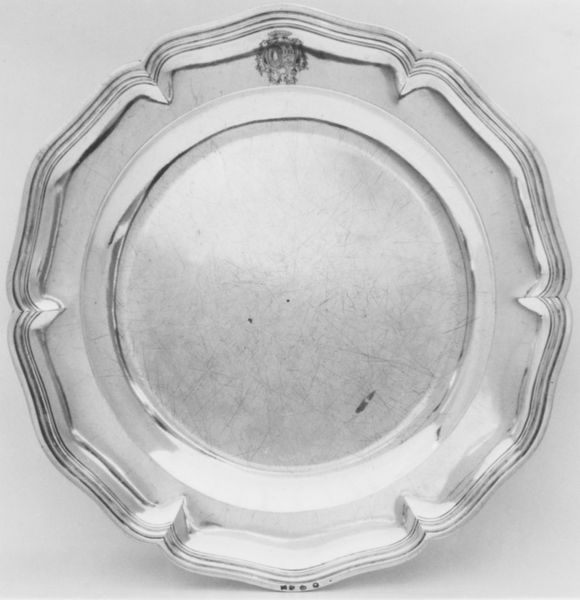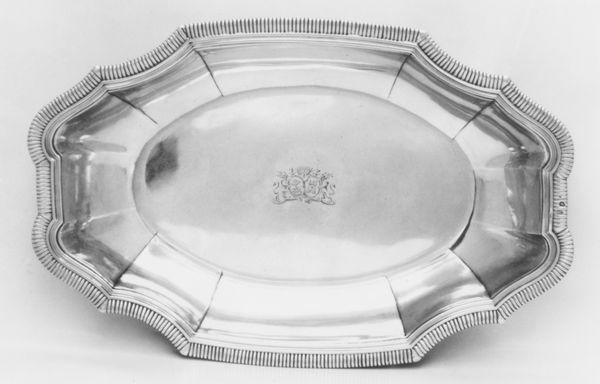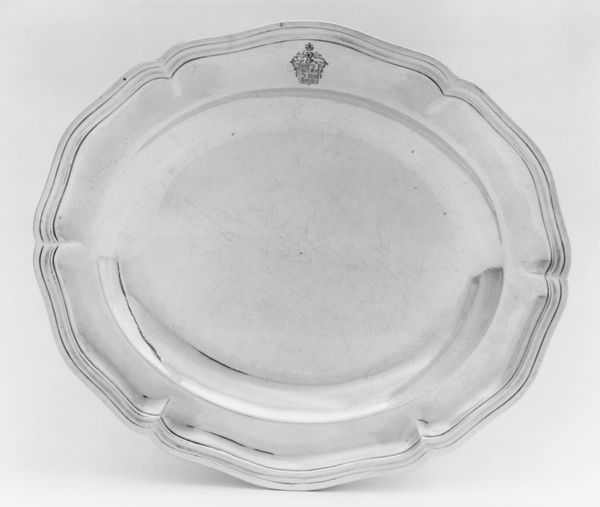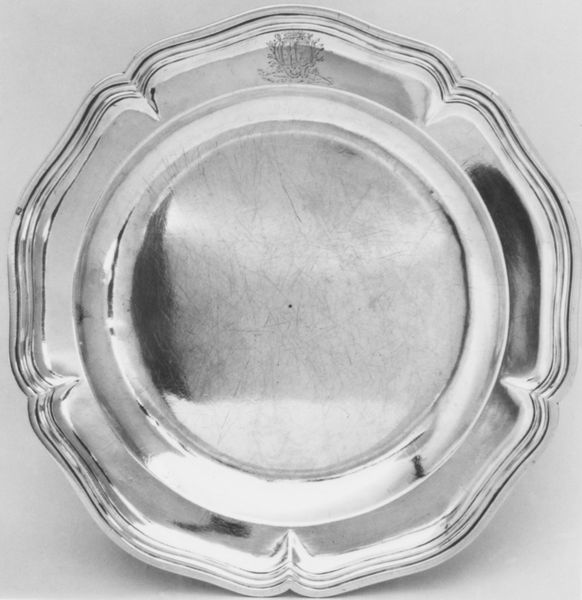
Dimensions: Overall: 3/4 × 9 × 6 3/8 in. (1.9 × 22.9 × 16.2 cm)
Copyright: Public Domain
Editor: This is a silver platter, or tray, made in 1783. It's currently held at the Metropolitan Museum of Art and credited to the widow of Jean-Pierre-Elou-Louis Piette. It seems so simple, yet the craftsmanship looks amazing, especially the repeating curves along the edge. How should we interpret its artistic significance? Curator: Precisely. Note the sinuous lines, the reflective surface playing with light. This piece is an excellent example of Rococo aesthetics. How do you see the overall composition? Editor: The symmetry is definitely present, though softened by the asymmetrical curves of the rim. It makes me think of something organic, like a seashell. Curator: An astute observation. Consider the pure visual form. The piece adheres to no narrative; it makes no symbolic claim. Its value resides within the object itself. The undulating border contrasted against the flat, reflective plane creates an appealing visual rhythm. Editor: So, it's beautiful simply because of how it looks and how the materials are worked? Is there something else to decode in that small emblem at its center? Curator: Indeed. The subtle crest introduces an element of restrained ornamentation. Notice the level of craftsmanship is incredible, particularly in manipulating a rigid material to create an object that flows so smoothly, almost liquid. Do you feel the emphasis is more on its utility or its pure design? Editor: That's a good question! I'm leaning toward pure design since every edge, every curve seems so carefully thought out and flawlessly executed, utility almost comes second. Curator: Yes, that emphasis on pure design perfectly characterizes the formal achievements of this era. The essence is not symbolic, or narrative. The piece is an exploration of form. Editor: Thanks. Now, when I look at it, I see the elegant simplicity even more and the focus on form and structure rather than any historical context.
Comments
No comments
Be the first to comment and join the conversation on the ultimate creative platform.


